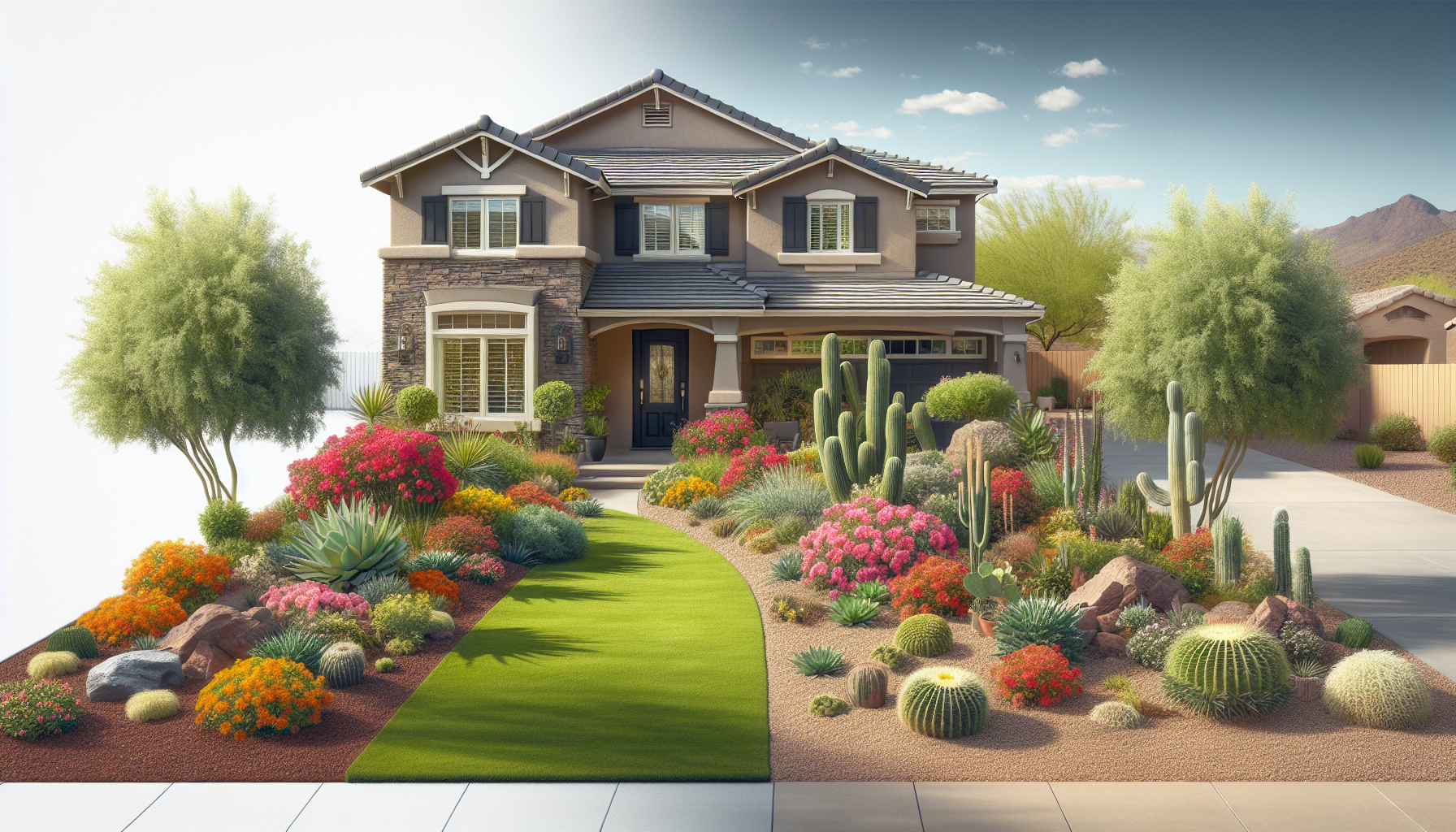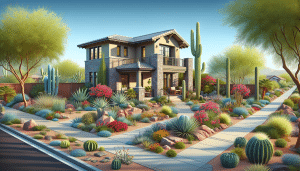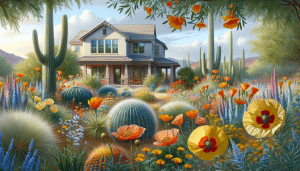Finding the right balance between a beautiful garden and water conservation can be a challenge for homeowners. At Red Mountain Landscaping, we understand the struggle and are here to guide you through the options of xeriscaping and traditional gardening. Whether you’re new to Arizona or a long-time resident, this information will help make your landscaping decisions easier.
Contents
Understanding Xeriscaping
Xeriscaping is a method of landscaping that reduces or eliminates the need for irrigation. As water resources become increasingly precious, this approach is growing in popularity, particularly in arid regions like ours.
By utilizing native and drought-resistant plants, xeriscaping minimizes water usage while maintaining an attractive garden. The focus is on efficient water use, soil improvement, and landscape planning that works with the natural environment.
What Is Traditional Gardening?
Traditional gardening, on the other hand, often involves using a variety of plants that may require more water and maintenance. This approach can offer a lush and vibrant appearance, featuring a wide range of flora that may not be native to the region.
For homeowners who love having a diverse and colorful garden, traditional gardening allows for more creative expression and a rich visual experience. However, it typically involves greater water consumption and care.
Water Usage Considerations
Water scarcity is a key issue where we live, making conscious water usage essential. Xeriscaping is designed to be water-efficient, often using 50-75% less water than traditional gardening. This not only benefits the environment but can also significantly reduce water bills.
In traditional gardening, maintaining a healthy and flourishing landscape might require a more robust irrigation system, particularly during the hotter months. While some homeowners may not mind the extra use of resources, it’s important to consider the potential long-term impacts on both the environment and your wallet.
Maintenance Requirements
When it comes to maintenance, xeriscaping offers a more low-maintenance approach. By using native plants that naturally thrive in our climate, less effort is needed to maintain the garden’s appearance year-round.
Meanwhile, traditional gardens often require regular weeding, watering, pruning, and fertilizing to keep plants healthy and vibrant. This can require a more significant investment of time and resources, appealing to those who enjoy gardening as a hobby.
Cost Implications
Initial installation costs for xeriscaping can be higher due to the specific plants and planning needed, but the long-term savings on water and maintenance often justify the investment. Once established, xeriscaped gardens are economical to maintain.
Traditional gardening may have lower upfront costs, but ongoing expenses such as water, fertilizers, and care can add up. It’s a trade-off that homeowners need to weigh carefully based on their preferences and lifestyle.
Climate Adaptation
Xeriscaping is particularly well-suited for our climate, as it incorporates plants specifically adapted to dry conditions. This results in a more resilient landscape that can withstand our local weather extremes without significant stress.
Traditional gardens might not adapt as quickly to climate variability. Depending on the plants chosen, some may struggle in periods of intense heat or drought, leading to additional care and resources needed to maintain their health.
Aesthetic Appeal
The aesthetic of a xeriscaped garden doesn’t mean sacrificing beauty. With a careful selection of colors, textures, and plant types, you can create stunning visual appeal that complements the natural environment. The thoughtful design can emphasize simplicity and elegance.
Traditional gardens offer an opportunity for lush landscapes filled with exotic blooms and greenery. For homeowners who prize a vibrant and diverse appearance, this approach can provide endless possibilities for creative flair and personal expression.
Ecosystem Support
Xeriscaped gardens contribute positively to the local ecosystem by using native plants that support local wildlife, including pollinators like bees and butterflies. This fosters a balanced and thriving ecosystem right in your backyard.
Traditional gardens, while diverse, may introduce non-native species that might not offer the same environmental benefits. Incorporating native plants into traditional settings can be a great way to achieve both beauty and ecological support.
Making the Right Choice for Your Home
Choosing between xeriscaping and traditional gardening ultimately depends on your preferences, priorities, and lifestyle. Xeriscaping offers a sustainable, water-efficient approach that’s suitable for those keen on conservation and low maintenance.
- Cost: Evaluate both the initial and long-term financial implications based on your budget.
- Watering Needs: Consider how much time and water you’re willing to dedicate to your garden.
- Style Preference: Reflect on whether you prefer a minimalist or lush garden appearance.
- Maintenance Commitment: Decide how much time you can invest in garden upkeep.
- Environmental Impact: Think about the ecological benefits you want your garden to support.
Partner with Red Mountain Landscaping
At Red Mountain Landscaping, we’re here to help you navigate these options and find what suits your home and lifestyle best. Our team of experts can provide personalized recommendations and support, ensuring that your garden not only looks stunning but also aligns with your priorities.
Whether you’re leaning towards xeriscaping or traditional gardening, we offer the expertise and experience needed to create a breathtaking space that meets your needs. Let us be your trusted partner in making your landscaping dreams a reality.
Conclusion
Choosing the right landscaping approach can enhance your home’s beauty and efficiency. Contact Us at 480-373-9312 or Request a Free Quote to discover the perfect solution for your garden.




